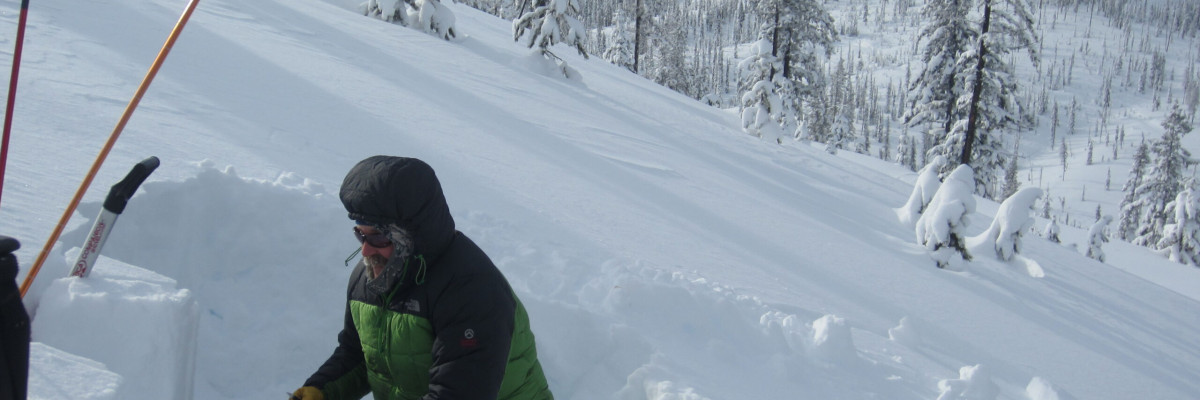On slopes that are 35 degrees and steeper the avalanche danger is considerable in the west central Montana backcountry. The area received significant snow over the weekend and human-triggered avalanches on steep slopes are likely.
Good Morning, this is Dudley Improta with the west central Montana avalanche advisory for December 30, 2014. This danger rating does not apply to operating ski areas and expires at midnight tonight (Dec. 30).
Weather and Snowpack
This morning northeast mountain winds have calmed but our area is under a wind chill advisory until 9 am. Mountain temperatures are double digits below 0; averaging about -15 F.
The primary avalanche concern is wind slabs on leeward slopes. The weekend’s storms provided plenty of snow for the wind to move around. The winds have blown out of the southwest to the northeast for the last four days, so a wind slab could lurk on any aspect.
Curt Friede, owner of Kurt’s Polaris, tried to get Steve and I into the north fork of Placid Creek (near Seeley Lake) on Sunday. Four snowmobilers had been caught in an avalanche in the area on Saturday. We were thwarted by 24 inches of new snow that fell Saturday night (and our riding skills) to get where the avalanche occurred; but from information gathered, it looks like the avalanche ran on the early season facets and an old melt freeze crust. The facets are still around; failing with high strength, but high energy, in snow stability tests (see Placid profile below).
Yesterday, the snow near Lolo Pass looked fairly stable at lower elevations (< 6000 ft.); but the surface snow readily sluffs on steeper slopes (>35 degrees). No problem, unless it pushes you into an undesirable place (trees, rocks, cliffs, etc.).
So there you have it, wind slabs are the primary problem with loose snow sluffs and the possibility of a deep failure hanging out there; all on the steeper terrain. The snow looks inviting; tread carefully.
The North Fork of the Jocko Snotel recorded 24 inches of snow in a 24 hour period from Saturday to Sunday. I would expect the snow to be less stable in the southern Missions and southern Swans.
Weather Forecast and Avalanche Outlook
Cold temperatures are predicted to last into Wednesday. The avalanche danger will remain the same until these temperatures warm. Dry conditions should dominate later in the week and allow inversions to build, which will warm up the mountain temperatures. The warming temperatures will help decrease the avalanche danger.
Steve will issue the next advisory on January 2, 2015. Ski and ride safe; have a fun and safe New Year holiday.
Public observations can be important to the avalanche advisory and to riders and skiers. If you would like to send us snow observations use our public observations form or e-mail us at [email protected] .
























